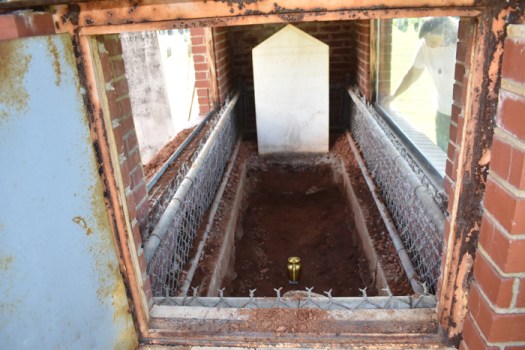French documentary crew wraps up exploration of Peter Ney’s grave
Published 12:04 am Sunday, July 10, 2022
CLEVELAND — The final day of the exhumation of Peter Stewart Ney’s grave wrapped up on Friday after three, hot days of digging, with one surprising development — the re-interment of several bones that supposedly belonged to Ney.
The question of whether Peter Ney was also Marshal Michel Ney, one of Napoleon Bonaparte’s generals, has been debated for more than 100 years. But no definitive answer has surfaced.
For the better part of a week, a French television crew from the television series Historie au Scalpel diligently dug into Ney’s grave in the cemetery at Third Creek Presbyterian Church. Director Dominique Adt, producer Mathieu Hucher and archaeologist, photojournalist and actress Jennifer Kerner were hoping to find even the smallest of bone fragments to test against a possible DNA sample in France.
But they did not find a single bone. (A story in Thursday’s edition reported a mouth bone was found, but the team actually found a mouse bone in the grave, but as Kerner noted, “It is my French accent, I know it is very hard to understand some words.”) A penny was also dug up, and the team did discover that there may indeed be bone fragments nearby at Davidson College.
In 1887, the church gave approval for an exhumation of Ney’s body. The remains were reportedly then returned to the grave. Some time later, a second request for exhumation was received, but the church refused.
In 1951, someone from the Ney Foundation gave bone fragments that allegedly were part of Ney’s skull to Davidson College, seemingly because of the school’s extensive Ney collection. When the crew from France began requesting permission to take a fragment for testing, the college decided the most appropriate course of action was to return the bone fragments to the church, where it was believed they belonged, and let the church decide how to proceed.
Church officials have since given the crew a bone fragment to take with them when they returned home Saturday, and the rest of the fragments were re-interred Friday afternoon in a simple ceremony.
Kerner said she was more than happy with the outcome of visiting Cleveland and that she is very appreciative to the community and those who came out to join them during the excavation.
“It was something of a roller coaster,” she said. “We began very excited when we arrived, then were low when we did not find anything, but then today, to have the bone fragment to take back and to have the rest returned to their resting place — I am very happy.”
She also said that even if there were bones at one time, the acidity in the soil could have left nothing behind to test.
The plan now is to take the bone fragments back to France and match the DNA with the samples of Michel Ney’s descendants. It is also not clear how much actual DNA will be available for comparison in France, since what is there is potential saliva that was left on a musical instrument. Adt said the station, which is similar to PBS in America, will look at all the information and programming the team puts together once test results are back and all research is organized before deciding on an air date, but promised to let folks here know when they might be able to see the finished product, and any answers that are uncovered.
During the work, researches dug down about 4 1/2 feet, to the bottom of the grave. While there were no bones, a clear outline where the coffin would have been was seen clearly in the burial plot.
Davidson College purchased a metal urn to place the remaining fragments to rest and a brief ceremony and prayers accompanied the return to the grave.








